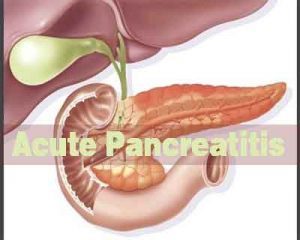- Home
- Editorial
- News
- Practice Guidelines
- Anesthesiology Guidelines
- Cancer Guidelines
- Cardiac Sciences Guidelines
- Critical Care Guidelines
- Dentistry Guidelines
- Dermatology Guidelines
- Diabetes and Endo Guidelines
- Diagnostics Guidelines
- ENT Guidelines
- Featured Practice Guidelines
- Gastroenterology Guidelines
- Geriatrics Guidelines
- Medicine Guidelines
- Nephrology Guidelines
- Neurosciences Guidelines
- Obs and Gynae Guidelines
- Ophthalmology Guidelines
- Orthopaedics Guidelines
- Paediatrics Guidelines
- Psychiatry Guidelines
- Pulmonology Guidelines
- Radiology Guidelines
- Surgery Guidelines
- Urology Guidelines
About one fourth acute pancreatitis patients develop diabetes after hospital discharge

Patients with acute pancreatitis (AP) are at increased risk of developing diabetes mellitus (DM) after discharge from the hospital, according to a recent study.
The study, published in the Frontiers in Physiology, found that ~1 in 5 patients with an AP episode develops diabetes afterwards, and the rate increases over time. In addition, the occurrence of DM after alcoholic AP, severe AP (SAP), and acute necrotizing pancreatitis (ANP) was 2 to 3 times higher than that secondary to biliary AP, mild AP (MAP), and AP without necrosis.
Patients having an episode of acute pancreatitis are frequently known to develop diabetes over time. The occurrence of diabetes after AP varies with severity, etiology and the extent of pancreatic necrosis during AP. Mengmeng Zhi, Department of Endocrinology, Affiliated ZhongDa Hospital, School of Medicine, Southeast University, Nanjing, China, and colleagues performed a systematic review to determine the incidence of new-onset DM after AP episode (s) and compared the rate of DM in AP patients based upon different disease characteristics.
For the purpose, the researchers searched for online databases and collected a total of 31 relevant studies with 13894 subjects. Stata 15 software was used for data analyses in the meta-analysis.
Also Read: AGI’s latest Guidelines for Management of Acute Pancreatitis
Key findings of the study include:
- The random-effects pooled incidence was 23.0% for DM (95% CI 16.0–31.0%) and 15.0% (95% CI 9.0–23.0%) for DM treated with insulin.
- The researchers noted substantial heterogeneity in incidence estimates for DM and DM treated with insulin.
- The DM incidence was higher in the populations that had a severe AP (SAP) episode than in those with mild acute pancreatitis (MAP) (39 vs. 14%).
- Patients that displayed pancreatic necrosis during the AP attack(s) had a higher frequency of DM than those without necrosis (37 vs. 11%).
- The pooled incidence of DM was higher after alcoholic compared to biliary AP (28 vs. 12%).
- The incidence of insulin use after SAP and alcoholic AP was 21 and 18%, respectively, with very low heterogeneities.
- According to the duration of follow-up, the pooled rate of DM and insulin use within 5 years after AP was 20 and 14%, while the rate associated with a follow-up duration of more than 5 years was elevated to 37 and 25%, respectively.
- On meta-regression, year of publication, male proportion, age at DM test, and duration of follow-up were neither positively nor negatively associated with the incidence of DM and DM treated with insulin in patients who had a prior AP attack.
Also Read: Early treatment decisions crucial for outcome of acute pancreatitis treatment : AGA Guidelines
"Patients with AP developed DM after discharge from hospital with a frequency of about 23%. SAP, alcoholic AP and acute necrotizing pancreatitis (ANP) were associated with an increased incidence of DM. Assessments of severity, etiology, and pancreatic necrosis are critical for predicting DM development after AP," concluded the authors.
To read the complete study follow the link: https://doi.org/10.3389/fphys.2019.00637

Disclaimer: This site is primarily intended for healthcare professionals. Any content/information on this website does not replace the advice of medical and/or health professionals and should not be construed as medical/diagnostic advice/endorsement or prescription. Use of this site is subject to our terms of use, privacy policy, advertisement policy. © 2020 Minerva Medical Treatment Pvt Ltd